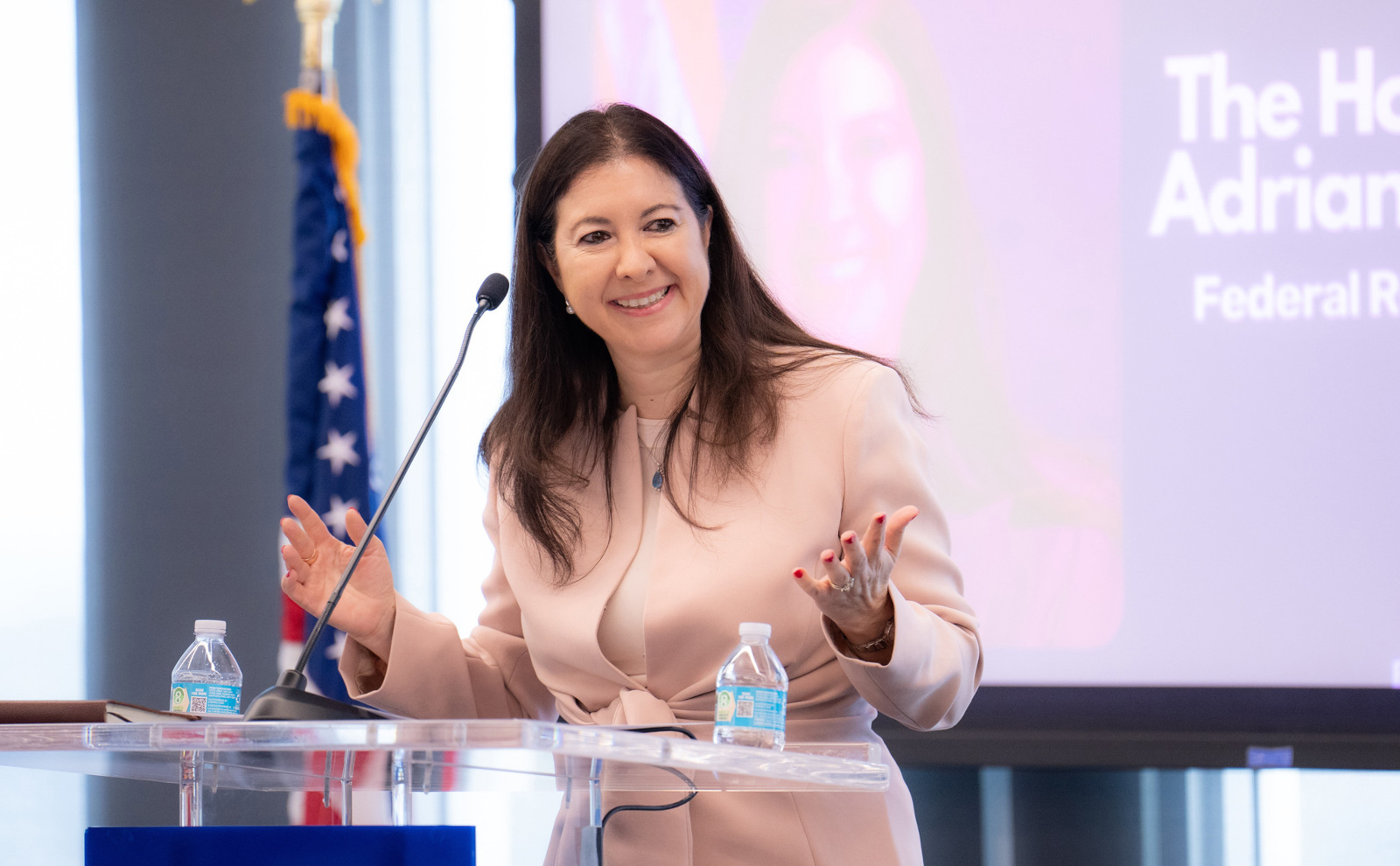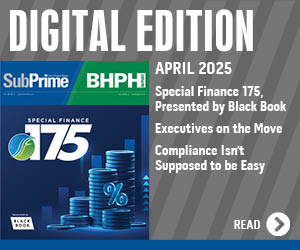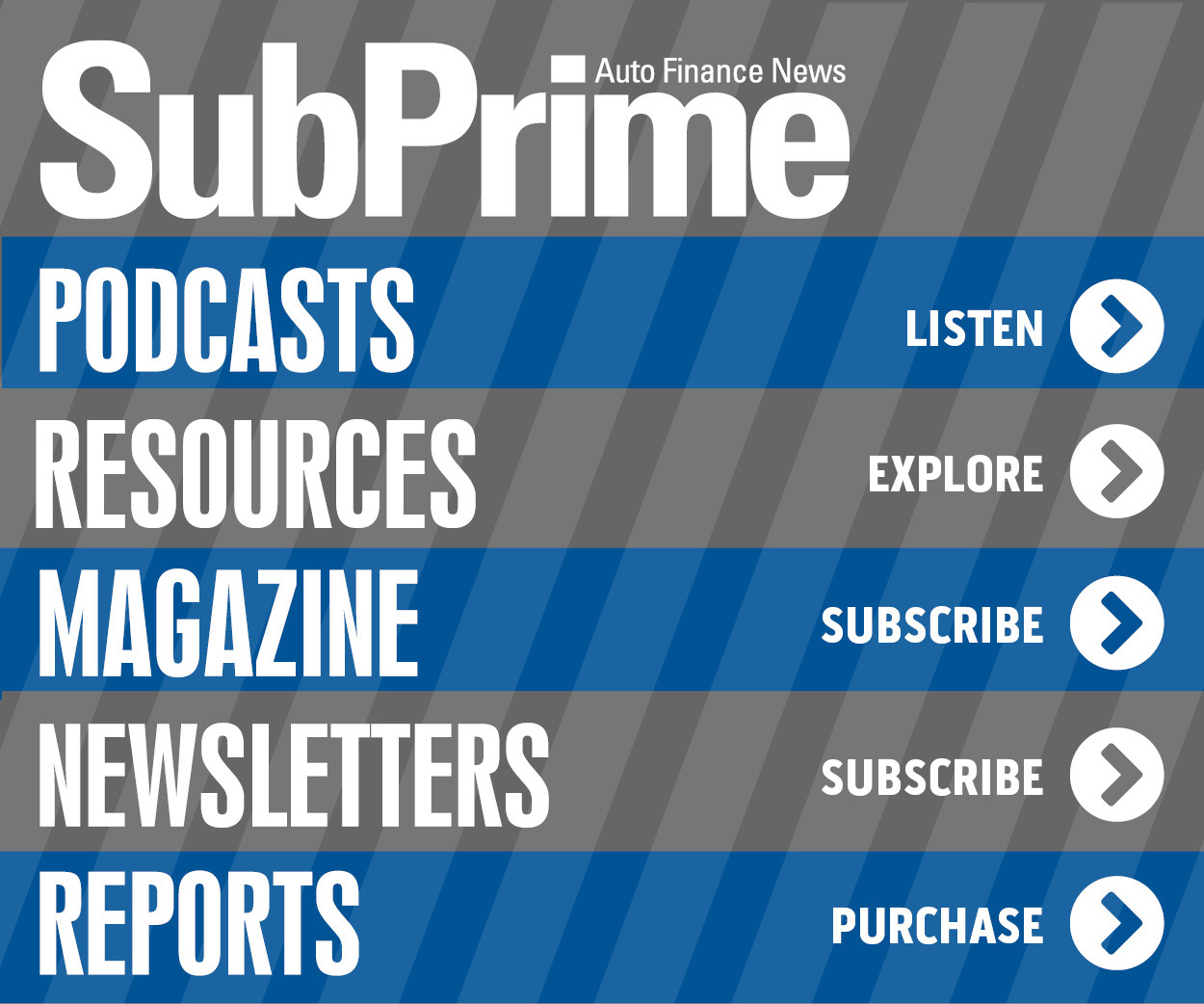With Fed still seeing growth at ‘solid pace,’ Fitch expects credit deterioration

Fed Governor Adriana Kugler is pictured giving a keynote speech at the Miami Economic Forum on Feb. 7. Image courtesy of the Federal Reserve.
Fitch Ratings predicted on Friday that the Federal Reserve likely won’t trim interest rates again until the fourth quarter, while U.S. credit trends are likely to deteriorate during the second half of the year.
And on Tuesday, Fed Governor Adriana Kugler said the U.S. economy is still growing at a “solid pace,” but acknowledged that inflation is still above what policymakers prefer.
Fitch Ratings offered a bearish forecast as the outlook for trade, economic growth and inflation worsens amid the escalating trade war and continued policy volatility.
Analysts said in a news release that “the latest U.S. tariff announcements and retaliation by trade partners sharply exceeded the already steep rises Fitch previously assumed.
“Other large policy changes are under way, including cuts to federal government spending and operations and tightening immigration policy, each with potential credit implications,” Fitch continued. “Funding and liquidity conditions have deteriorated, with higher long-term interest rates despite a sharply worsening growth outlook.
“Import prices are set to rise sharply and there has been an alarming jump in U.S. households’ medium-term inflation expectations over the past two months,” Fitch went on to say while noting that it expects U.S. annual economic growth to slow significantly through the year to just 0.4% by the fourth quarter.
Meanwhile, Kugler touched on inflation and other factors that shape Fed decision during a speech at the Heller-Hurwicz Economics Institute, which is at University of Minnesota in Minneapolis.
“I am closely monitoring incoming data and the cumulative effects on both sides of our mandate from policies in four distinct areas: trade, immigration, fiscal policy, and regulation,” Kugler said. “I am also monitoring any risks to the outlook, especially upside risks on inflation or downside risks to employment.
“Still, I think our monetary policy is well positioned for changes in the macroeconomic environment,” she continued. “Thus, I will support maintaining the current policy rate for as long as these upside risks to inflation continue, while economic activity and employment remain stable. I remain committed to achieving both of our dual-mandate goals of maximum employment and stable prices.”
And just like Fitch Ratings, Kugler mentioned that tariffs are much more intense than the Fed anticipated, further complicating its task associated with interest rates.
“I see inflation still running above the 2 percent target while the labor market has remained stable. But the economy is facing heightened uncertainty, with upside risks to inflation and downside risks to employment,” Kugler said.
“This month, we learned that the tariff increases are significantly larger than previously expected,” she continued. “As a result, the economic effects of tariffs and the associated uncertainty are also likely to be larger than anticipated. It is important for monetary policymakers to broadly examine all available information, including market-based measures, surveys, and anecdotal reports, to understand what is happening in the economy as early as possible because, as I discussed, it takes time for policy to have an impact.
“As the direction of the economy changes, it is critical to pay close attention to real-time data and to consider the lags and asymmetries of policy transmission to ensure we respond not only to the actual movements on both sides of the mandate, but also to the risks to the economic outlook,” Kugler went on to say.


